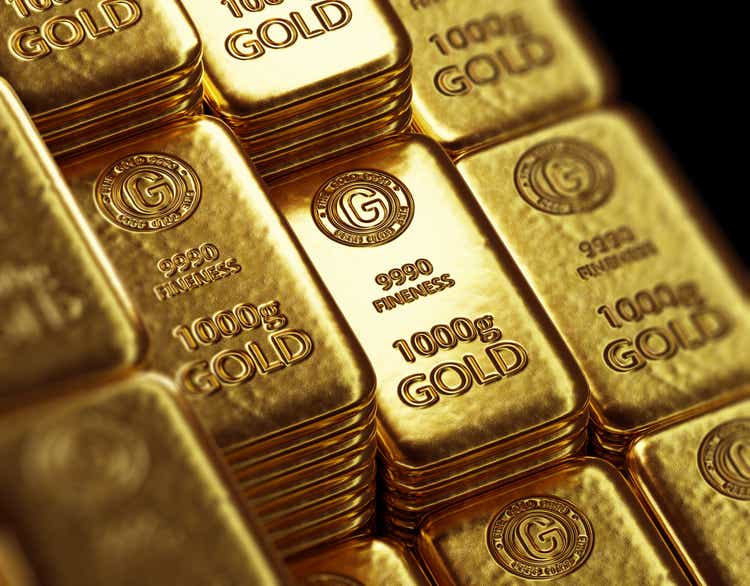
monsitj/iStock via Getty Images
Gold and other metals fell on Thursday after the Federal Reserve flagged only one interest rate cut this year, signaling U.S. interest rates likely will stay higher for longer than previously indicated.
Gold had gained in the previous session after U.S. Consumer Price Index data released Wednesday showed inflation cooled more than expected in May, but reversed course after the Fed delivered hawkish commentary on the prospect of monetary easing after Comex trading had closed for the day.
Metals continued lower even after U.S. producer prices unexpectedly fell in May, a further indication that inflation subsided after surging in Q1.
“Gold’s inability to hold rallies on bullish data this week suggests widespread profit-taking,” New York-based independent metals trader Tai Wong told Reuters.
Front-month Comex gold (XAUUSD:CUR) for June delivery finished -1.5% to $2,300.20/oz, its lowest settlement value since May 3, and front-month June silver (XAGUSD:CUR) settled -3.9% to $28.990/oz, its lowest close since May 14.
ETFs: (NYSEARCA:GLD), (NYSEARCA:GDX), (GDXJ), (IAU), (NUGT), (PHYS), (GLDM), (AAAU), (SGOL), (BAR), (OUNZ), (SLV), (PSLV), (SIVR), (SIL), (SILJ)
“Chinese buying interest may resume at lower levels but it’s unclear where but, according to the calendar, they haven’t bought above $2,300,” Wong also said.
China’s unchanged gold reserves in May do not necessarily mean the country is halting gold purchases, StoneX Market Intelligence head of market analysis Rhona O’Connell said, according to Dow Jones.
Initial headlines surrounding the unchanged reserve levels by the People’s Bank of China were overdone, since they were a “premature supposition,” given that numbers from the PBOC sometimes have been opaque, with no change reported for a while before a big jump, O’Connell said.
Reserve-building may have been occurring over time, possibly not directly by the PBOC yet, but through another channel such a sovereign wealth fund, which makes it possible that gold actually “has gone into government hands in one form or another,” O’Connell says.
More on gold and gold miners
Insight: Economic Indicators and Speculation on Gold Prices
The recent shift in gold prices following the Federal Reserve’s decision on interest rates highlights how closely economic indicators and central bank policies impact the precious metal market. Despite initial gains driven by cooling inflation and lower producer prices, gold experienced a downturn due to the Fed’s hawkish stance on monetary policy. This dynamic interaction between economic data and policy decisions underscores the volatility and sensitivity of gold prices to macroeconomic factors.
Insight: Chinese Gold Reserves and Market Speculation
The discussion around China’s unchanged gold reserves in May provides insight into how market participants interpret central bank activities. Speculation arose regarding the reasons behind China’s steady reserves, with suggestions that gold purchases might be occurring through alternate channels like sovereign wealth funds. This speculation not only sheds light on the potential diversification strategies of central banks but also underscores the complexity of analyzing gold market dynamics beyond traditional supply and demand factors.













